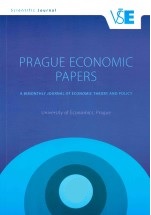How Tax Wedge of Low and Upper-income Households Affects Income Distribution: Findings from OECD Countries
How Tax Wedge of Low and Upper-income Households Affects Income Distribution: Findings from OECD Countries
Author(s): Emin Efecan AktaşSubject(s): Labor relations, Public Finances, Fiscal Politics / Budgeting, Socio-Economic Research
Published by: Vysoká škola ekonomická v Praze
Keywords: Income distribution; tax wedge; labour; generalized method of moments;
Summary/Abstract: The tax wedge mainly quantifies the extent to which tax on labour income enervates employment and it reflects the total labour costs. It is commonly defined as the ratio between the amount of taxes paid by the worker and the related total labour costs for the employer. As such, the tax wedge affects both the labour force (unemployment) by reflecting the burden of the employer and indirectly the household disposable income. It is conferred that the alteration caused by the tax wedge on income distribution has been analysed with a small number of empirical studies. Based on the hypothesis that the tax wedge may affect income distribution from different aspects in terms of household size and income level, dynamic panel data analysis is carried out for 36 OECD member countries and the period 2000-2019. The dynamic panel analysis estimation findings for two households (single person with no children, earning 167% of the average wage, and one-earner married couple with two children, earning 100% of average wages) reveal that the tax wedge is negatively related to unfair income distribution. In addition, the aspect of the relationship is the same (negative) for the two households.
Journal: Prague Economic Papers
- Issue Year: 32/2023
- Issue No: 3
- Page Range: 246-272
- Page Count: 27
- Language: English

